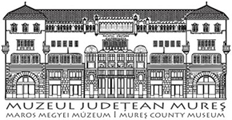Marisia - Maros Megyei Múzeum Évkönyve 29/1. (2009)
Istorie
Istorie 41 ASPECTE ALE VIETII COTIDIENE A ROMÄNILOR DIN JUDETUL TREISCAUNE, ÍN A DOUA JUMÄTATE A SECOLULUI AL XIX-LeA §1 PRIMA JUMÄTATE A SECOLULUI XX lOAN LÄCÄTUßU Aspects of everyday life of Romanians of Treiscaune County, in the second half of the nineteenth century and first half of the twentieth century Abstract Archival processing of funds of Orthodox and Greek Catholic parishes in the former Treiscaune county, from the second half of the nineteenth century and first half of the twentieth century, in the National Archives of Covasna county, gave us the opportunity first-hand knowledge of new information, as diverse as it is interesting, about church life, educational, cultural and community life of Romanians from itracarpatic Arch. These informations about the reading and just thinking about “what they were and how they were our ancestors” in the second half of the nineteenth century and early twentieth century, about how the Romanians acted in this part of country for preservation and affirmation of religious, language and culture identity and, through it all, how they prepared the Great Union of December 1, 1918. Wide range of information presented, despite their great diversity, is about several conclusions, such as: the role of the two Romanian churches (Orthodox and Greek Catholic), the preservation and affirmation of national identity, the efforts made by the ecclesiastical and laic Romanians in Transylvania elite for the organization and functioning of religious education in Romanian, of the Romanian press, of foundations and cultural associations, particularly of the Association of ASTRA, etc. In comparing datas on the number of Romanian believers in XVIII-XIX century, in many communities of itracarpatic Arch, with those of today, result the size of intense Magyarization process of Romanians in the area, carried out both peaceful and coercive means in the last two centuries. As the same time are presented a number of facts of everyday life, of the fight with superstition and ignorance, all proving that the Romanians of Transylvania, by their basic institutions and their leaders were included in the process of emancipation, innovative spirit that characterized of those times, bringing them and the specific, the common cultural heritage training in multi-ethnic and pluriconfesional.area of south-eastern Transylvania. ín ultimii ani au apärut mai multe lucräri referitoare Ia istoria, cultura §i civilizatia romänescä din sud-estul Transilvaniei. О bibliografie cuprinzätoare este redatä ín volumul „Romänii din Covasna §i Harghita”, apärut cu binecuväntarea §i coordonarea P.S. loan Selejan, Episcopul Covasnei §i Harghitei1. in „Angvstia”, nr. 11/2007, anuarul Muzeului National al Carpatilor Räsäriteni §i al Centrului Ecleziastic de Documentare „Mitropolit Nicolae Colán”, este publicat sumarul numerelor 1-10, ale publicatiei 1 1loan Läcätu§u, Vasile Lechintan, Violeta Pätrunjel,Romänii din Covasna §i Harghita. Istorie. Bisericä. §coalä. Cultura, Editura „Grai Romänesac”, Miercurea-Ciuc, 2003.
